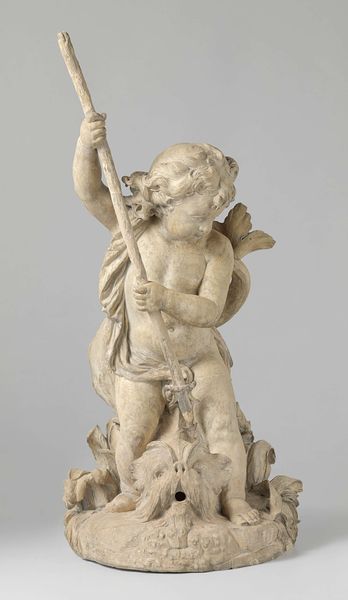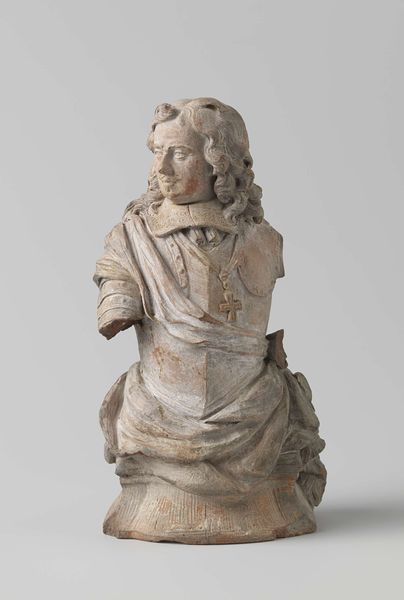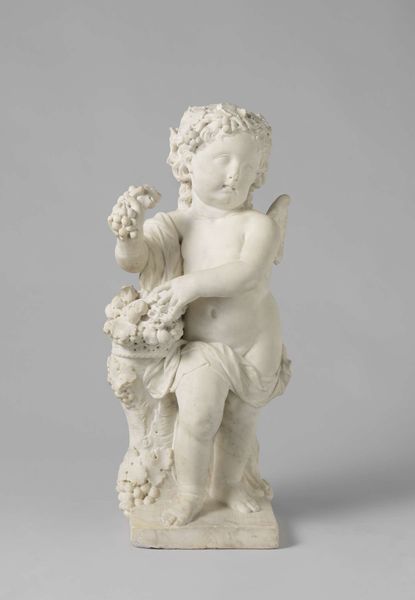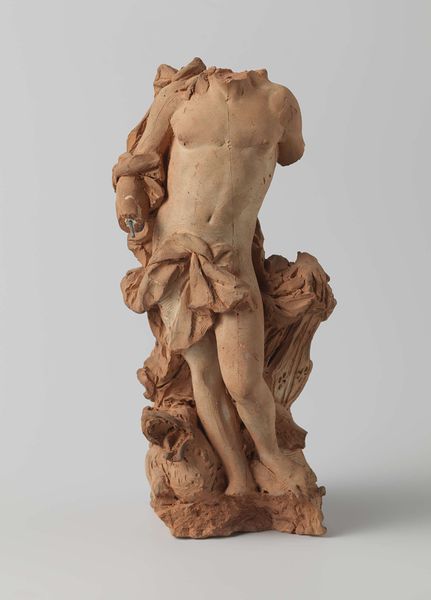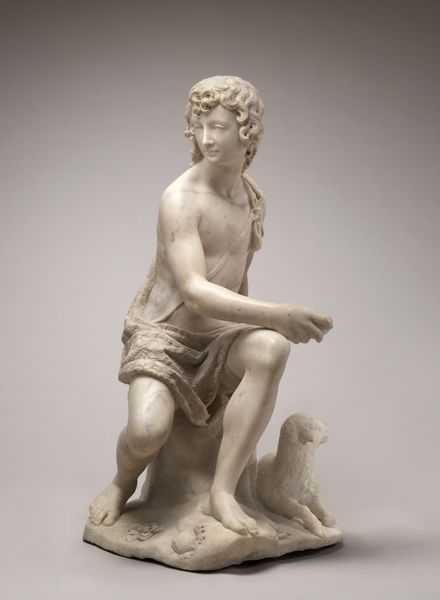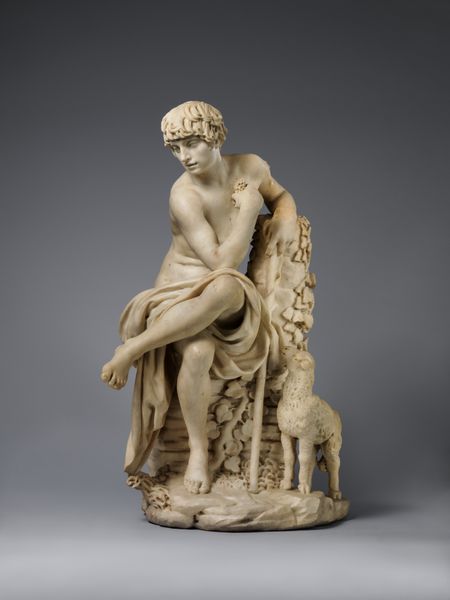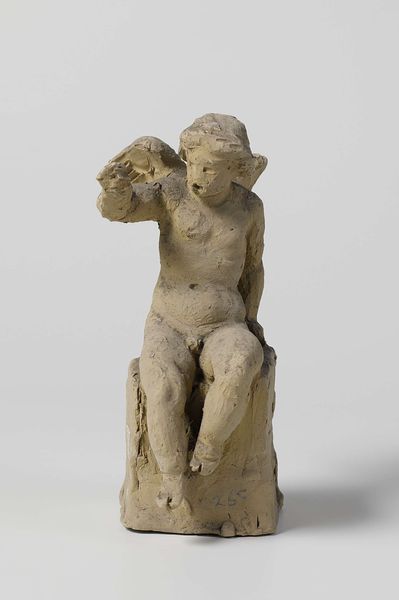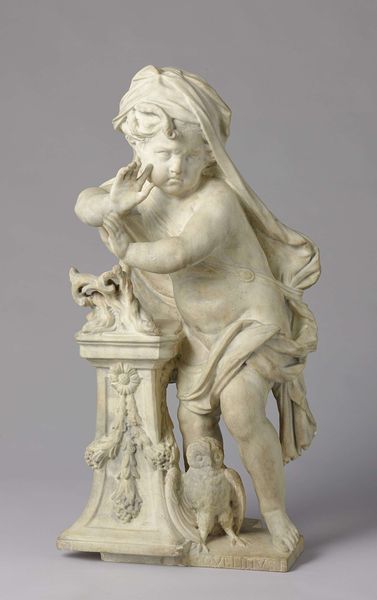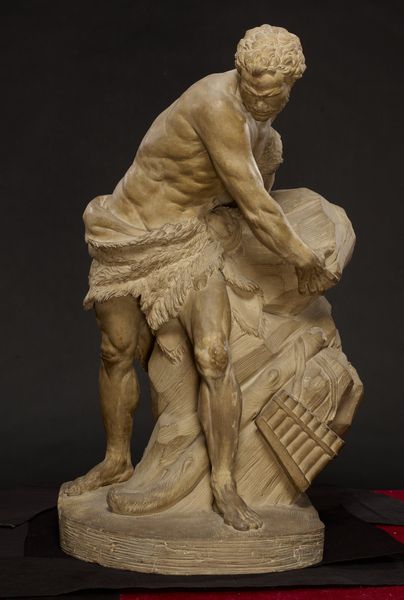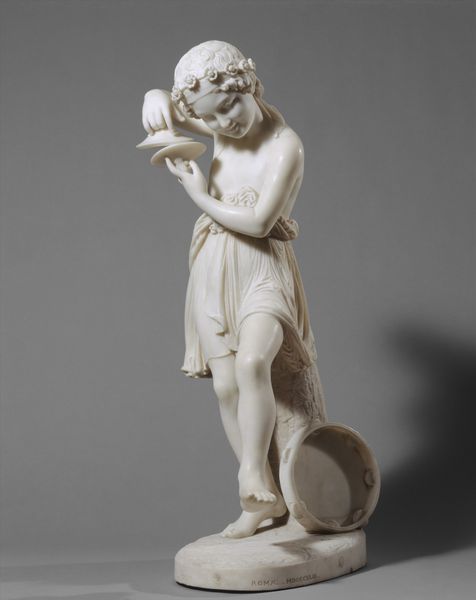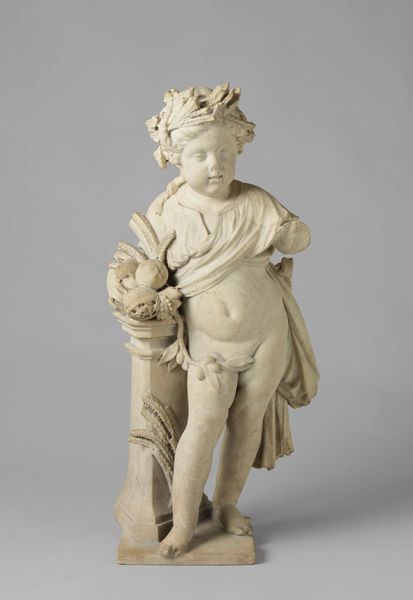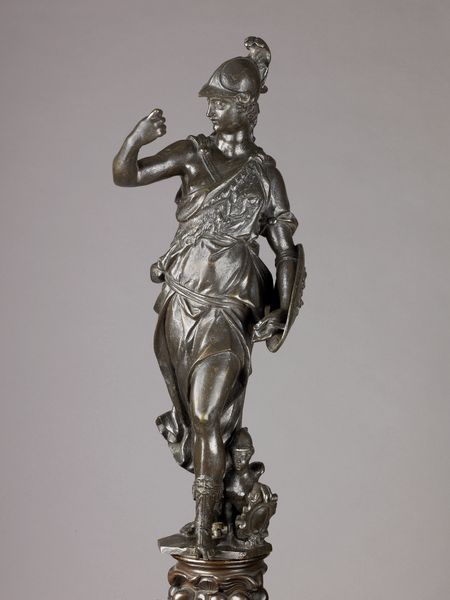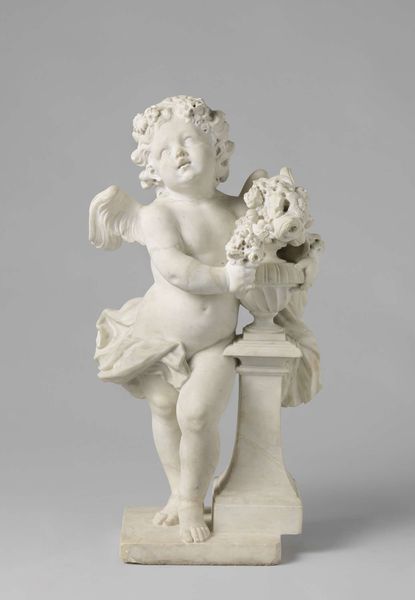
sculpture, plaster
#
baroque
#
sculpture
#
figuration
#
sculpture
#
plaster
#
decorative-art
Dimensions: Height: 16 7/8 in. (42.9 cm)
Copyright: Public Domain
Editor: So this is "Candle-bearing angel," one of a pair, made in plaster by Giuseppe Mazzuoli between 1672 and 1684. I find it quite moving actually; the texture and pose give it such a gentle, almost melancholic feeling. What's your take on it? Curator: It's crucial to consider how these angels functioned within their original context. Pairs of candle-bearing angels, like these, were not simply decorative objects. During the Baroque era, they held significant power within the Church as potent symbols of divine light, embodying sacred narratives and reinforcing the Church's socio-political authority through their display. Editor: Divine light as in…literally light from candles? Curator: Yes, precisely. Light as a visual and symbolic tool, amplified within grand church settings. These angels illuminated spaces and also illuminated doctrine, quite intentionally. Does knowing the context influence how you see it? Editor: Absolutely! It goes from being a touching artwork to a religious and political tool…did their placement in the Church matter too? Curator: Indeed, their positioning was incredibly strategic. Consider their placement near the altar or other focal points during ceremonies, magnifying their visual impact. It was about creating a controlled and directed emotional and spiritual experience for the viewer, solidifying the Church’s position. Editor: Wow, it’s like Baroque visual propaganda! I never thought about it that way. Seeing the angel in terms of its historical context makes you think about it entirely differently. Curator: Exactly. Thinking critically about the power dynamics embedded within the artistic representation prompts deeper inquiries and gives richer understanding of the angel.
Comments
No comments
Be the first to comment and join the conversation on the ultimate creative platform.

